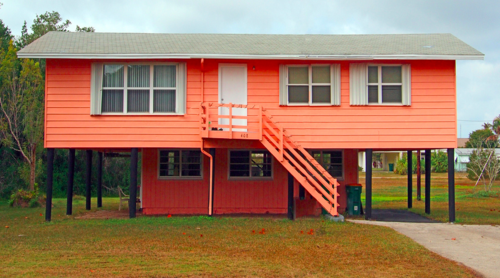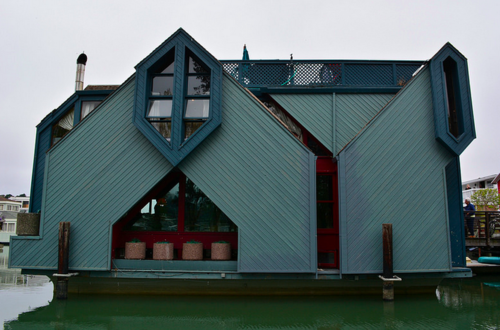
If you live in an area that is prone to flooding, the design of housing can make a big difference in the house's ability to resist the flood.
Types of house designs
- Sacrificial floor house:[1] This type of house has a base floor that can be used as a laundry/wet space/bathroom and/or to hold stored items and vehicles, and other purposes. Items of value can be shifted to upper levels of the house during a flood, to ensure their protection. This type of house can be useful in areas that experience low to medium flooding probability.
- Stilt houses:[1] This refers to raised houses or houses on stilts, poles or platforms that keep them well above the ground. In hot areas, there can be a co-benefit of good air ventilation. Any such house must be able to withstand flash flooding and coastal storm surges (where relevant) and as such, should be designed by someone with the knowledge of appropriate materials and strengths. There is a long history of stilt houses from around the world, wherever people have lived in tandem with lakes, the sea or frequent flooding. Climate change impacts may necessitate changes to the strengths of traditional designs if storm surge or flooding events become stronger or fiercer. Examples include the Queenslander,W which was a dominant style of architecture in north-eastern Australia for many decades.

- Floating houses:[1] This house is able to float on water and moves with the water levels. Most such houses are permanently located on water but this needn't be the case, as a house could be designed to become floating should the need arise, with some ingenuity and forward thinking. Floating houses require fairly still water environments at this stage (such as a lake, lagoon or canal) and cannot be placed on an ocean.[1] Current examples can be seen in the Netherlands or areas such as marina housing as in Sausalito[2]. This approach to waterside living as a flood-proofing solution is still fairly much in the experimental stage in most places but it is a solution that will undoubtedly become more acceptable (and affordable?) in flood-prone areas in time. [It would be useful to provide various examples in this article.]

Waterproofing existing houses
It is also possible to waterproof existing houses, to varying degrees, and dependent on the type and location of the housing. Retrofitting a house in a flood-prone area may be about giving residents time to salvage items before the flooding takes over rather than thoroughly protecting the house and its contents. It slows down entry of floodwaters rather than keeping the floodwaters out.[1]
Sources and citations
- Jane Rawson and James Whitmore. (2015) The Handbook Surviving and Living with Climate Change. ISBN 978-1-921924-93-4